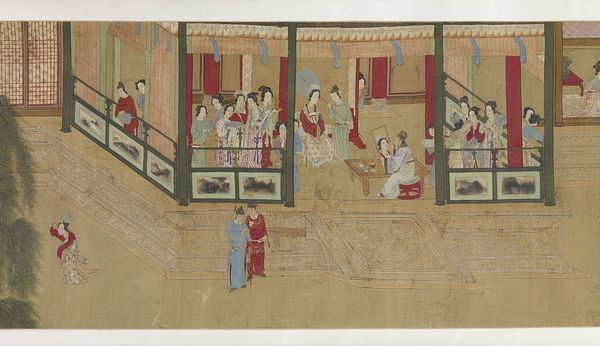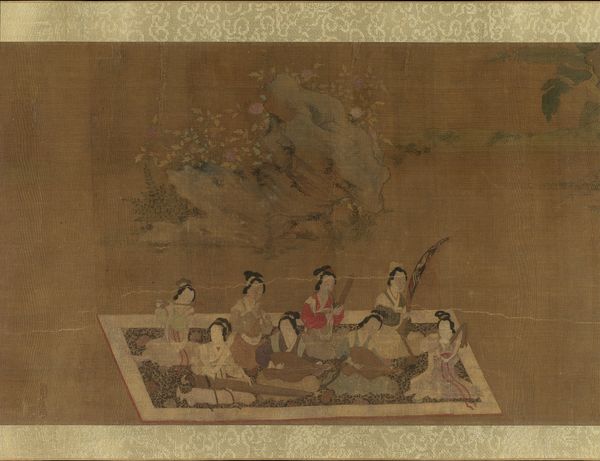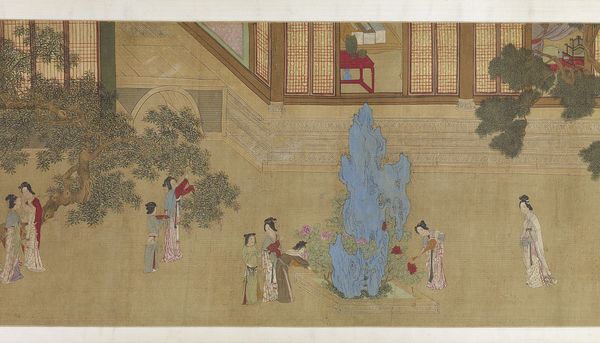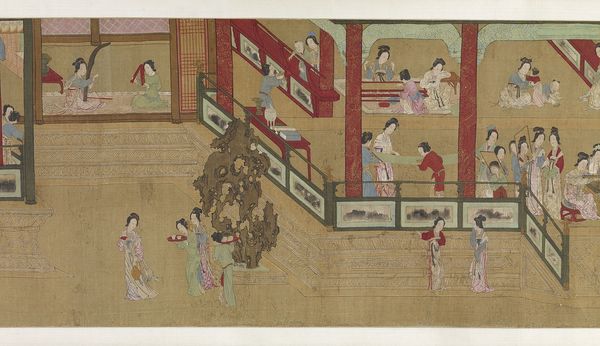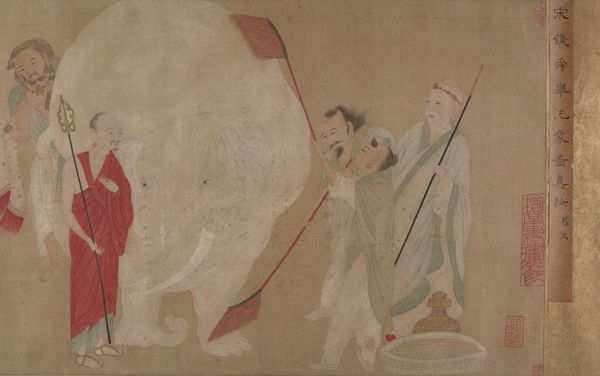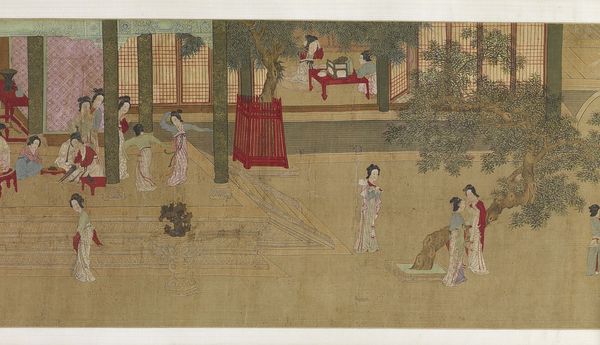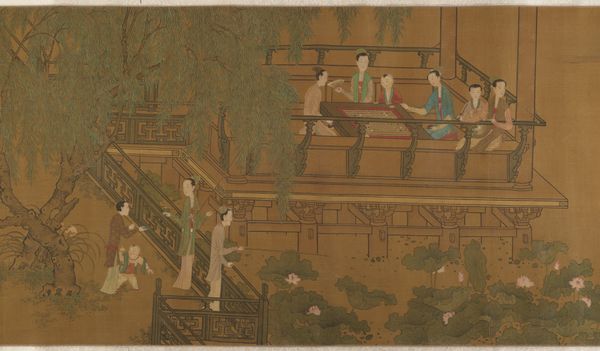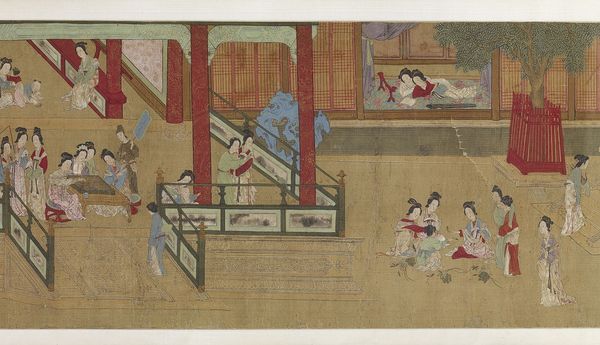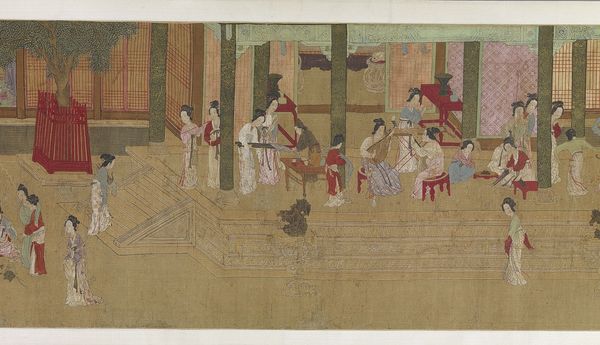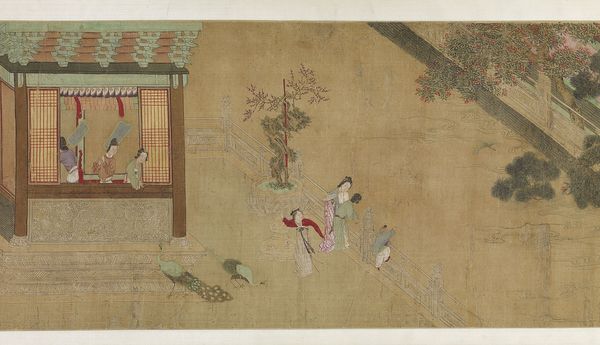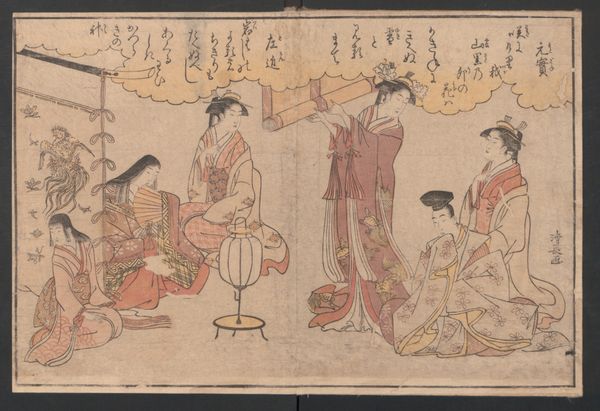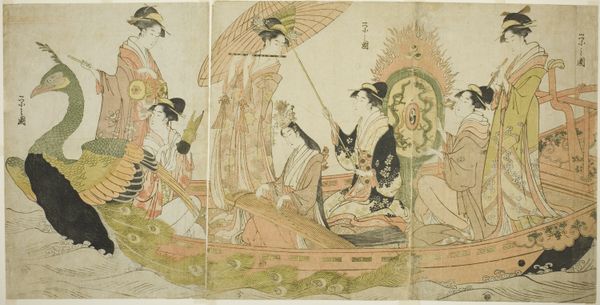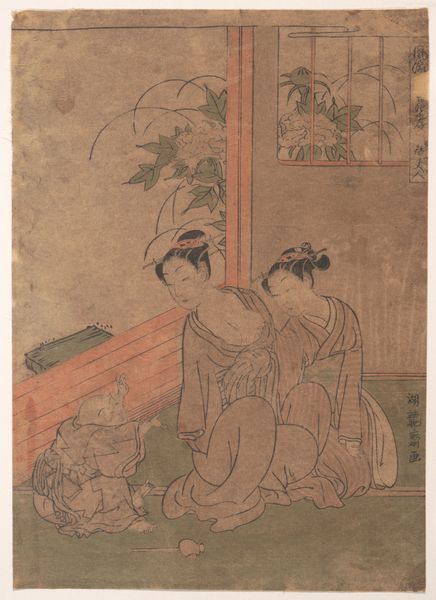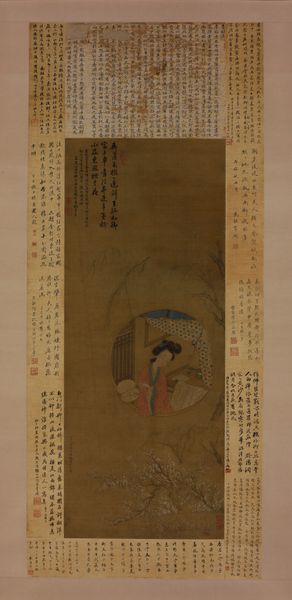
United by Music 合樂圖 Ming dynasty (1368–1644), 15th/16th century,明朝
0:00
0:00
painting, watercolor, ink
#
water colours
#
narrative-art
#
painting
#
asian-art
#
figuration
#
watercolor
#
ink
#
line
#
genre-painting
#
watercolor
Dimensions: 41.9 × 184.2 cm
Copyright: Public Domain
Curator: The mood of this piece, immediately, is…well, like stumbling upon a secret, joyful gathering. A party where everyone seems to know the steps but you. Editor: Indeed. What you're sensing is beautifully captured in Zhou Wenju's "United by Music," created during the Ming dynasty, sometime in the 15th or 16th century. This exquisite work, rendered in ink and watercolor, is an amazing example of the "genre-painting" and an exemplar piece of Asian art. Curator: Genre-painting...like a snapshot? Except a super graceful, centuries-old snapshot painted with, like, water? There’s an ethereal quality to the lines, especially in the figures’ faces. Editor: Precisely! Think of it as a window into the cultural milieu of the Ming court, and its emphasis on women—we can also use philosophy and feminist theory to contextualize this subject further. Observe their gestures, costumes, and adornments, each holding profound meanings related to hierarchy and social identity within that complex world. Curator: I can see that! I like that they look to be genuinely enjoying themselves. There’s this implied sound…layers of laughter mingling with musical notes… I wonder what that huge red vase is about, dominating that section of the scene! I'm drawn to it even if I am uncertain of what it could be. Editor: The red vase stands out because it’s, symbolically, connected with royalty. Also, keep in mind how the meticulous brushstrokes and careful distribution of figures enhance the overall visual harmony of this painting. Consider the spatial depth achieved through traditional linear perspectives that differ dramatically from modern notions. Curator: Like everything’s vibrating with unspoken meanings. Is this gathering also about displaying power? Because now it is clear to me why a vessel would hold so much cultural relevance, dominating a portion of the picture! It definitely does help with visual balance though. Editor: This painting allows viewers to reconsider our historical understanding and perception regarding class, labor, performance, and femininity—offering some contemporary dialogues by allowing people who had limited opportunities of public life, finding comfort and expression together. Curator: The painting whispers about forgotten stories, of harmonious sounds that filled once filled noble halls, but now the echo is preserved on silk and through a shared, lingering silence. It reminds you that some kinds of echoes continue. Editor: It does that to all of us, indeed. By highlighting its subtleties through interdisciplinary analysis and historical study, the image serves as a powerful relic and reminds us of intersectionality. It connects us deeply with its artistic message that is worthy of academic studies even in our day.
Comments
No comments
Be the first to comment and join the conversation on the ultimate creative platform.
